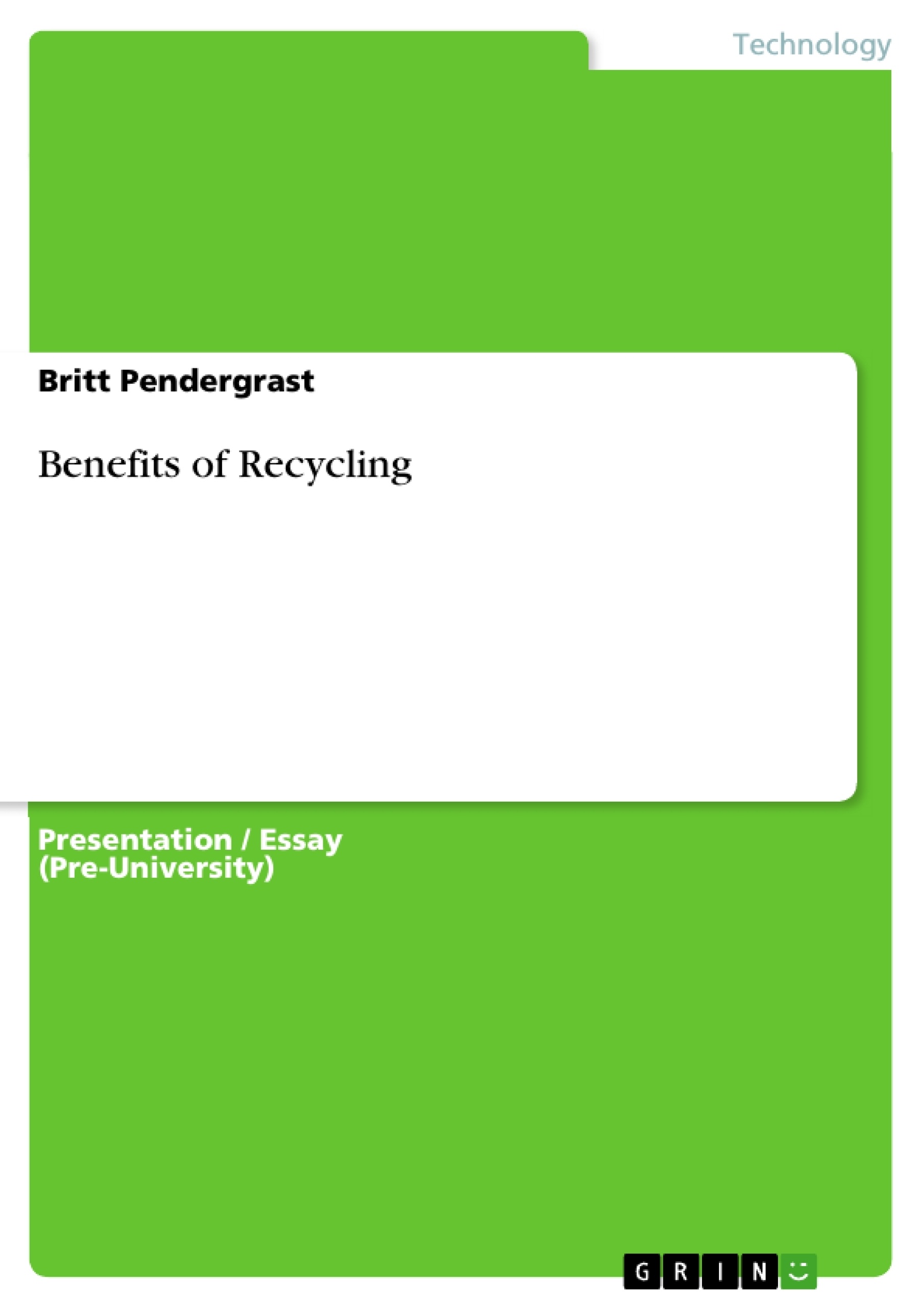This paper includes conclusive research about the effects of overflowing landfills and how to reduce these problems through efficient recycling. Environmental and economic issues concerning the overuse of landfills are discussed as well as methods to prevent these issues from getting out of hand.
Inhaltsverzeichnis (Table of Contents)
- Benefits of Recycling
- Environmental Problems Caused by Landfills
- Economic Irresponsibility of Landfills
- Recycling and Energy Conservation
- Glass Recycling
- Aluminum Recycling
- Growth of Recycling in U.S. Communities
- Recycling in Small Businesses
Zielsetzung und Themenschwerpunkte (Objectives and Key Themes)
This paper aims to demonstrate the significant benefits of recycling, focusing on its environmental and economic impacts. It explores the problems associated with overflowing landfills and highlights the role recycling plays in mitigating these issues. The paper also examines the current state of recycling practices in the U.S., particularly concerning the disparity between residential and small business participation.
- Environmental consequences of landfill waste
- Economic benefits of recycling
- Energy conservation through recycling
- The role of government programs in promoting recycling
- Challenges in promoting recycling amongst small businesses
Zusammenfassung der Kapitel (Chapter Summaries)
The introduction establishes the importance of waste management and introduces recycling as a key solution. The paper then discusses the environmental problems caused by landfills, including air and water pollution from toxic emissions and leachate. It further explores the economic irresponsibility of discarding recyclable materials, emphasizing the waste of resources and the costs associated with extraction and production. The following section delves into the energy-saving aspects of recycling, using glass and aluminum as examples to illustrate the significant energy reductions achieved through recycling. The paper then explores the growth of recycling programs in the U.S. and the impact of governmental initiatives. Finally, it addresses the challenges in implementing effective recycling programs for small businesses, highlighting the economic barriers they face compared to residential recycling programs.
Schlüsselwörter (Keywords)
Recycling, landfills, environmental pollution, economic benefits, energy conservation, waste management, government programs, small businesses, resource depletion.
- Citation du texte
- Britt Pendergrast (Auteur), 2011, Benefits of Recycling, Munich, GRIN Verlag, https://www.grin.com/document/182995



